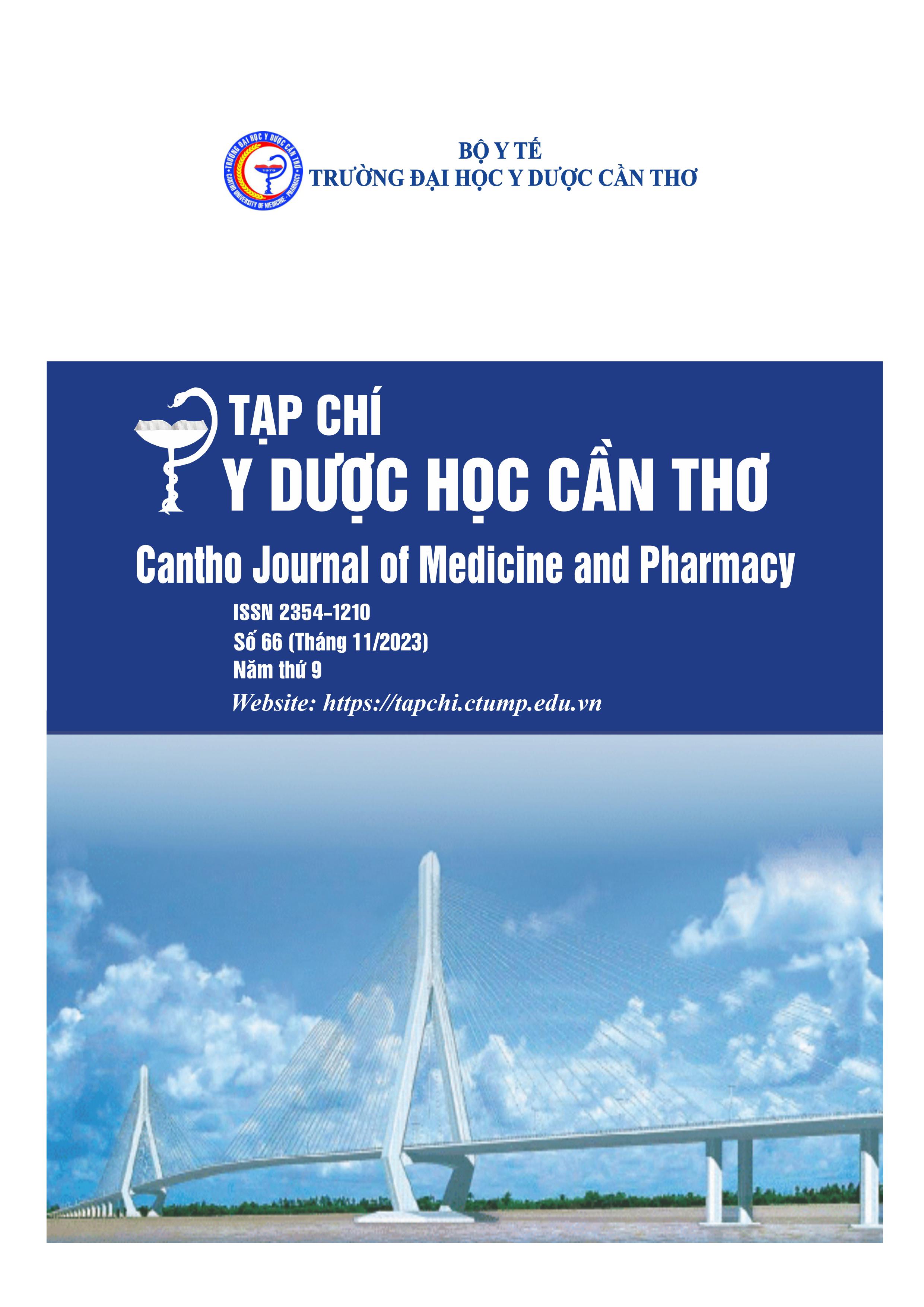RESEARCHING THE ANTIOXIDANT EFFECTS OF PYCNOPORUS SANGUINEUS EXTRACT ON INVIRO AND INVIVO MODEL
Main Article Content
Abstract
Background: Pycnoporus Sanguineus is one of the 25 main medicinal mushroom species in the world with very high medicinal value, which is favored by many consumers in Asian countries, Europe, America, etc. Pycnoporus Sanguineus is known as a medicinal mushroom rich in biologically active substances such as flavonoids, polyphenols, saponins, tannins, terpenoids, coumarins, alkaloids, steroids, proanthocyanidins…. However, there have not been many studies to investigate deeply the pharmacological effects of Pycnoporus sanguineus. Objectives: 1) To investigate the invitro antioxidant effect of Pycnoporus sanguineus extract by DPPH(1,1-diphenyl-2-picrylhydrazyl) method, 2) Investigation of antioxidant effects of Pycnoporus sanguineus on a white mouse model of oxidative stress by Paraquat. Materials and methods: Extract of Pycnoporus sanguineus (MH225776); investigating the in vitro antioxidant effect of the extract by DPPH method; The effect of the extract of Pycnoporus sanguineus at doses of 500 mg/Kg and 1000 mg/Kg in white mice model of oxidative stress with Paraquat. Results: The DPPH inhibitory activity of the Pycnoporus sanguineus extract reached the highest value (86.39%) at the concentration of 100 μg/mL. The IC50 value of the inhibitor was 55,276 μg/mL. On the other hand, the group of mice using the Pycnoporus sanguineus extract at doses of 500 mg/Kg and 1000 mg/Kg after inducing oxidative stress with Paraquat had a statistically significant (p<0.05) lower liver Malondialdehyde (MDA) content (p<0.05) compared to the group of mice using the same doses physiological saline after inducing oxidative stress with Paraquat. Conclusions: The extract of Pycnoporus sanguineus has antioxidant effects in vitro and in an experimental model of oxygen stress on white mice with Paraquat.
Article Details
Keywords
Pycnoporus extract, Antidoxidant, Fungi
References
2. Rech, G., da Silva, L. L., da Silva, K., Silva, T. M., Fontana, R. C., Salvador, M., ... Camassola, M. (2020). Lipid‐ lowering effect of Pinus sp. sawdust and Pycnoporus sanguineus mycelium in streptozotocin‐ induced diabetic rats. Journal of Food Biochemistry. 2020. 44(8), 1-12, https://doi.org/10.1111/jfbc.13247.
3. Chen, X., Li, M., Li, D., Luo, T., Xie, Y., Gao, L., ... Lai, X. Ethanol extract of Pycnoporus sanguineus relieves the dextran sulfate sodium-induced experimental colitis by suppressing helper T cell-mediated inflammation via apoptosis induction. Biomedicine & Pharmacotherapy. 2020. 127(7), Article 110212, https://doi.org/10.1016/j.biopha.2020.110212.
4. Trần Đức Tường. Nghiên cứu sản xuất và thử nghiệm hoạt tính sinh học của quả thể nấm Vân Chi đỏ (Pycnoporus sp.) từ phụ phế phẩm nông nghiệp. Trường Đại học Cần Thơ. 2021, 55, 120.
5. Chrismis Novalinda Ginting, I Nyoman Ehrich Lister, Ermi Girsang, Dewi Riastawati, Hanna Sari Widya Kusuma, Wahyu Widowati. Antioxidant Activities of Ficus elastica Leaves Ethanol Extract and Its Compounds, Molecular and Cellular Biomedical Sciences, 2020. 4 (1), 27-33, https://doi.org/10.21705/mcbs.v4i1.86.
6. Sharma, O. P., & Bhat, T. K. DPPH antioxidant assay revisited, Food chemistry, 2009. 113 (4), 1202-1205, https://doi.org/10.1016/j.foodchem.2008.08.008.
7. Nguyễn Thị Bạch Tuyết và cộng sự. Khảo sát độc tính cấp, khả năng kháng oxy hóa và kháng viêm của cao Trầu không (Piper betle l. Piperaceae). Tạp chí Khoa học và Công nghệ. 2023. 5(3). 11-11, https://doi.org/10.55401/jst.v5i3.1174.


